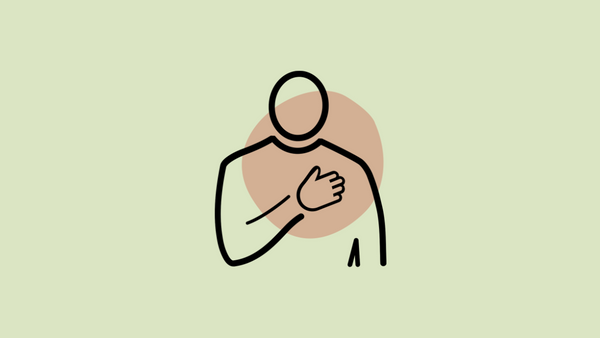‘TW’ is one of the more recent acronyms on the internet. Though it has nothing to specifically do with the up-and-coming “woke” culture — there is a tangent. But! TW is that slang that should’ve been part of the internet communications system and sadly wasn’t. Until we got woke! Essentially, we woke up and finally, realized we can think.
TW is a slang that’s one of a kind. It’s not around to entertain as this acronym is not one that would appear if there’s no precise and fundamental need for it. In short, TW is a vital slang that’s both powerful and useful. It surfaces the ugly/uglier/ugliest sides of life and warns audiences before consuming such discomforting content. It’s being seen a lot more these days and that’s a great sign. Read on to know why.
Seeing ‘TW’ a Lot? This is What it Means
There are two parts to the title of this paragraph. One, what TW means, and two, why we’re seeing more of it these days. TW expands to a lot of things. But on social media, the more popular expansion of the acronym is Trigger Warning. As the expansion hints, this is an acronym that warns. Though it can be used trivially, it’s generally reserved for serious content that can be disturbing in one too many ways.
TW alerts the audience on what they can expect further into a content format (posts, carousels, videos, reels, long-form content, etc). It is used in captions, comments, posts, etc. The reason why it’s “trigger” warning and not just “warning”, is because the content it’s warning against can be triggering to all/many/some audience. TW informs the readers/viewers to be prepared for what’s to come.
A TW sign highlights the type of trigger in the content that follows. If it’s a video from a war zone, then, the TWs here are war, violence, death, and blood (depending on the content). If it’s a post about rape, then, TW is rape, sexual violence, abuse, etc. Just a ‘TW’ or ‘Trigger Warning’ sign does more harm than good. It grips the audience and they don’t know what to expect (that’s not a very nice feeling). Hence, along with a TW sign, it is essential to also mention the type of trigger(s) in the respective content format.
Why TW is Important?
A TW sign prepares an audience for explicit, graphic, and overall discomforting content (in different measures and different types). If you were to receive a violent video without a description, you would not only be terrified but also angry at the sender. You were unprepared for what was to come, and therefore, the video took you by surprise, shock, and fear. Uncomfortable.
Now, if the same video did have a TW sign, the resulting emotions upon viewing it wouldn’t be any different. They would only hit differently. You saw it coming, imagined the worst, and then sized what you watched to what you imagined. If it was within your imagined parameters, it didn’t do that much damage. But, if it shot above and beyond those expectations, it would stick around for much longer than anticipated — and you’re still uncomfortable, but with consent.
This is not the only reason why TW is important. In the mentioned scenario, you opened a video without a TW sign, got mad, and gave the sender a piece of your mind. But, here’s an alternate scenario. The video contains things that you not only dislike but can also physically/mentally/psychologically disturb/destroy. Now, you’re not just mad. You’re also uncomfortable, scared, disoriented, and overall in a much worse state than you were in before you watched the video.
Example explaining the consequence of not using TW
Imagine this.
You, the viewer, have a phobia towards fire. Intense, unexplainable, but very real and very old fear towards fire. A small amount of fire like a lit candle is okay, but anything more than a lamp makes you intensely uncomfortable. Now, you receive a video without a TW and you imagine it to be a funny, light-hearted video. But, there’s horror ahead.
Once you start playing the video, you see a fire accident. Your immediate reaction may be to throw the phone, run away, or cry. Your mind ruminates about the visuals from the fire video. It disturbs you, disrupts your sleep, your working days, pretty much everything for a while. And depending on how affected you are, you take that long to heal.
This destruction may have never happened if there was a TW about the incident. To the person who sent it, the video was just news. But to you, it was an exhausting piece of information that triggered you and left you in terrible shape. TW may seem like a “favor” the sender/creator is doing for an audience, but it is actually a responsibility.
If someone is going around giving and sharing triggering information that no one asked for, they need to take responsibility for what that info could do to their audience.
Why is it Popular Only Now?
TW is not only a cautionary acronym, it’s also a unique internet slang. While almost every slang on the internet is to communicate an emotion or a reaction, this slang tends to the emotion of an audience. It’s a courtesy slang, if you will. The slang’s growing popularity and mandation for triggering content are directly proportional to the progress we’ve made with mental health.
A couple of years ago, mental health wasn’t in the form it is today. It was, in fact, an isolated and taboo aspect of human anatomy. With increasing awareness about mental health and mental illness, we’ve become more empathetic. The present consumerism is an evolved place. We’re not only interested in consuming, but we’re also conscious of the way we’re consuming. This applies to content as well.
Content consumerism in the past
Back in the day, media was simply a lens into the happenings of the world. This lens was objective, it didn’t take into account numerous intricacies on the consuming end. Info on an event was shared and people consumed the news. That was about it. Sure, there were many aspects of content that did come with a warning, but it wasn’t as well thought-off as it is today. In the modern world of digital news, most of which circulates via social media, we’re intensely aware and concerned about the way we consume. We don’t want to be left feeling bitter after watching/reading/viewing something.
We’re more aware of mental health, mental illness, that we now, understand to a great extent what ‘triggers’ are and how triggering they can be. This is possibly why we see more posts and other forms of content (mostly on social media, for now) with a trigger warning. We’re not just marketers and content creators anymore. We’re empathetic marketers and creators.
Even if it is our own news, we (most of us) go out of our way to both share content while being mindful of its repercussions on the readers/viewers. Nevertheless, this is not a general habit. Many people still mindlessly share content without putting themselves in the shoes of the audience. The habit is breaking, but it would take a while before it becomes a bad habit.
How and When to Use TW?
Digging deeper into the internet acronym TW, it’s evident that this slang is a lot more serious than it was probably portrayed before. TW is a crucial acronym and there’s hardly any excuse for not using it. Most times, the entire slang is spelled out just in case some people don’t understand what TW stands for. Either way, it’s a saving grace.
It’s important to understand the weightage of a piece of content and apply TW appropriately — to both share your content, but without making anyone uncomfortable or worse. Here are the major contexts where TW is not an option.
If you find yourself flaring up against the strict condition to use TW and judging the inexcusable carelessness with the slang, we recommend practicing empathy. Sooner or later, you’ll understand the fundamental responsibility of using TW if the content needs it.
TW signs must always appear as early as possible.
If it’s a video, the sign must appear at the beginning. If it’s a post, then, the caption must include the sign (it’s advisable to place it at the beginning of the caption itself describes the post or mentions death literally, not figuratively), if it’s a discussion about a triggering subject, the first thing in that thread should be TW, and so on.
Mentions of death
Death is the heaviest part of life for the living. It provokes so many complex emotions because each person’s experience with death is different — and these first-hand experiences often spread as second-hand experiences.
We consume news, content, real-life stories associated with death, and our initial relationship with death is left complicated. So, if you’re sharing about, related to, or even content containing mentions of death, it is your responsibility to begin the post with a TW sign. This applies to death in all forms.
- Please go through this. TW – death
- Here’s a beautifully painful poem. But, TW – mentions of death.
- Watch the following at your own risk. TW – suicide
Violence
Violence in any form may not be as catastrophic as death, but it can definitely be a means to the end. Each ‘trigger’ has something in common — subjectivity. Like death, violence too has a different impact and relationship with different people.
What’s violent to one person, may, unfortunately, be a routine to another. Violence that is bearable by one person may provoke destructive emotions and reactions in another. If you’re sending content that is violent (any degree, form, or type of violence) or sharing the same on a bigger platform, you MUST add a TW.
- Videos from the incident. TW – physical violence, mentions of rape.
- A fictional story may be made up, but it doesn’t fail to impact if it must. TW – domestic violence, sexual abuse, foul language
- Snippets from the controversial show. TW – gun violence, bullying, molestation.
- HUMANS ARE THE WORST. TW – BRUTAL Animal cruelty
Mental Illness
Since TW and the acronym’s popularization is founded in mental illness and creating awareness about it, TW must accompany content that is about mental illness too. However, this use-case can be optional — depending on the degree of mental illness.
Mental health is a balance of emotions, thoughts, and behaviors. Mental illness is when there’s an imbalance. We’re all sad, but someone’s degree of sadness is debilitating. We all get scared sometimes and fear some things — but someone’s fear is on a higher level, affecting them on a broader scale.
So, if your content mentions major mental illnesses and conditions like depression, anxiety, panic attacks, schizophrenia, DID, phobias, etc., then, you ought to use TW before going any further.
- Covered a story today. TW – schizophrenia
- More from my series of experiences. TW – my intense lizard phobia.
- Sometimes, we’re not possessive. We’re just afraid. TW – separation anxiety
Specific Use-Cases of ‘Trigger Warning’
The whole subject of ‘trigger warning’ and its usage is easier said than done. Major aspects like death, violence, and mental illness are general triggers and easier to think of apply TW accordingly. However, there are many specific and niche triggers that are just as existent and alive as the common triggers. The only difference? Not many share in these niche triggers — which explains why many don’t understand such triggers.
What is trivial to many is triggering to one. It is expected to still go ahead and share the content because it doesn’t affect the many, but it takes love, empathy, and unconditional compassion to count that one person in. Geez. Are you kidding?
If we’re going to be progressing and growing as a population with evolved emotional quotients and if we’re going to be taking mental illness seriously and spreading more awareness and help, then, it would only be hypocritical to tend to the many and ignore the few — because the very basis of mental illness is that it is personal. It’s a condition. We are talking specifics when we talk of mental illness.
The many faces of progress
Putting a trigger warning on a video that has a violent death is necessary. it’s mandatory, nobody likes viewing torture. Sometimes, it so happens that some of us feel the same about animals and pretty much anything. We do not like fitting things into the cruel boxes of humiliation, torture, violence, death, and blood. It may seem like it’s “too much” to ask for a trigger warning while sharing images/videos of dead animals or dead animals becoming food, but it’s also “too much” to assume that everyone loves to kill for food.
The whole reason why ‘trigger warning’ ever came into place is that we showed that we care about our audience. We, for once, stepped outside our minds and realized that billions at a time do not share in our interests, and perspectives. Everyone’s different and entitled to their own. Hence, we decided to use a TW to warn people to avoid certain content they’re physically/mentally/psychologically uncomfortable with it and to filter out audiences who, by nature, would be more affected (children, elders, people living with conditions, etc). Now, we simply need to do one more thing. Apply it to specifics!
When we say ‘specifics’ we refer to specifics that are, ironically, general. For instance, food preferences. We know people who eat meat, those who practice a vegetarian diet, and people who prefer it vegan. Now, most of us are aware of these specifics. This is why it is essential to apply TW when you’re talking about something that may not sit right with others. It can be excusable if it appears in short captions, but if there’s elaborate content on the specific trigger, a warning is necessary.
Emojis to Use With TW
When TW or ‘Trigger Warning’ is used in any context, the whole point is to get people to see it. If there’s a trigger warning that’s not the first thing you see, then it defeats the entire purpose of TW. So, apart from boldening TW/trigger warning, putting it at the start, you can also attract more attention to it with bright, attention-grabbing emojis.
Here are the best emojis you can add to your trigger warnings and help as many readers/viewers as you can.
⚠️ Warning
This yellow triangle with a highly visible black exclamation mark is the most-used and mainstream symbol when it comes to warnings. In fact, the name of the emoji is the ⚠️ Warning emoji. It exists to warn and the reason is the colors. They’re bold, catchy, and instantly visible — which is why they make great warning signs offline as well.
You can drop in a ⚠️ with ‘trigger warning’ or ‘TW’ and you can be quite sure that many wouldn’t miss it. Like, ‘I’d like to share something in light of the controversial discussion. ⚠️ Trigger warning – pedophilia, and other paraphilias.’
🚨 Cop Car Light
If you’re on the road, and there’s a cop car somewhere around/near you, your attention immediately diverts. Even a parked cop car can grab attention provided its bright, rotating, red light is still on. The same concept of vigilance can be replicated online as well with the 🚨 Police Car Light emoji.
Tag this emoji along with a TW sign to attention to the content. For example, ‘The climate crisis is getting far more morbid than we could’ve imagined. 🚨 Trigger warning: Animal suffering, death, poisoning.’
❗Red Exclamation Mark
The ⚠️ Warning emoji inspires the❗Red Exclamation Mark emoji in one major way. Given the subtle but prominent similarity between the two emojis and the alarming color of the latter,❗can be used to draw attention towards a TW disclaimer for written content formats. You could use it in visual content formats, but it may get lost in the span of the screen (unless it’s ginormous-ized). Like, ‘❗❗❗Trigger warning – Paranormal activity‘.
Red Shapes
This multi-faceted color with so much meaning and so many different types of significance attached to it acts as a perfect TW companion. The color can mean anything from love to death. In this exhaustive list of symbolism, alertness and danger are two of the connotations to the color red.
Besides, due to the brightness of the color, it draws all the more attention. We’re referring to the red used in emojis like🔺 Red Triangle Pointing Up, 🟥 Red Square, and 🔴 Red Circle. These emojis work efficiently while directing attention to a space that contains a TW. For example, ‘🟥 TW – Suffering’.
Conclusion
Many times TW or ‘trigger warning’ is used mockingly, humorously, or patronizingly. That’s the evolving (and branching out) part of this acronymic slang. Nevertheless, this trivialization does not affect the actual importance and weightage it carries.
The way of consuming TW/trigger warnings entirely depends on the context. If the context is funny, light-hearted, and up to no good, the trigger warning is simply a colloquial application of the slang — as opposed to using it in serious and appropriate contexts. You could use it either way, as long as it makes your point and the general point of making the internet a safe place for diversity.










Member discussion